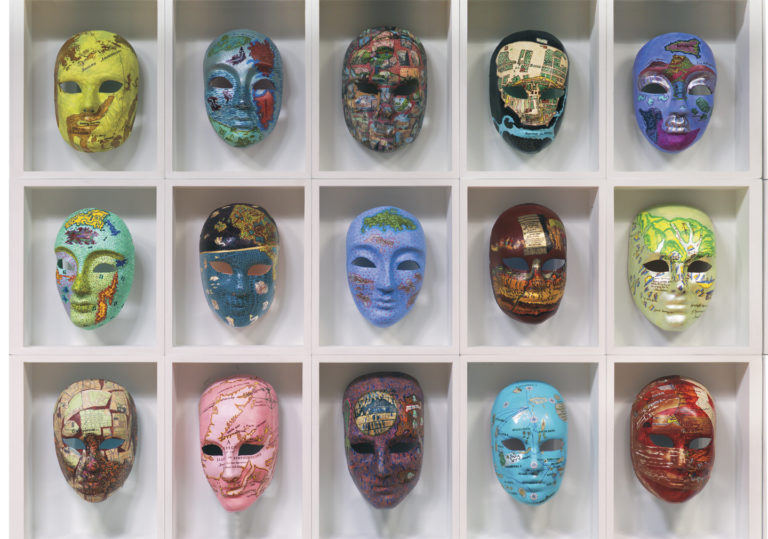In this edited collection, Elizabeth McNeil, James E. Wermers, and Joshua O. Lunn draw together cutting-edge thinkers on queer pedagogy and queer activist praxis in an effort to dismantle the historical underpinnings of education as a tool of oppression. As an alternative to normative education, the editor offer up queer pedagogy as a methodology for “challenging accepted hierarchies, binaries, and hegemonies that have long dominated pedagogy and praxis” (5). The collection features the queering of traditionally normative classroom and academic spaces alongside queer approaches towards less commonly acknowledged sites of learning, such as social media websites, community advocacy meetings, and prisons.
Keyword: queer
Mixing and Mingling Queerly: The Activist Sociality of Mentoring in the Personal Narratives of Coloma and Lorde
Edward Chamberlain takes on the pressing need for mentorship for queer youth, in particular queer youth of color. Addressing a dearth in both studies on and commitment to the wellness and flourishing of queer youth of color in institutions of higher learning, Chamberlain turns to what is in some respects both a traditional and nontraditional archive of resources: personal narrative writing by queer people of color. Taking up both Audre Lorde’s Zami: A New Spelling of My Name and Roland Sintos Coloma’s “Fragmented Entries, Multiple Selves,” Chamberlain argues that the structural hybridity of these narratives serves as a formal model for a queer mentoring methodology, and delves into the texts themselves for examples of how to mentor queer youth of color in and beyond the academy.
Queer Provisionality: Mapping the Generative Failures of the Transborder Immigrant Tool
Alison Reed investigates the border- and boundary-crossing performance of Electronic Disturbance Theater 2.0’sTransBorder Immigrant Tool (TBT), an incomplete cell phone program that offers GPS, guidance, and poetry to those attempting to cross into the United States across the Mexico/US border. Reed suggests a provocation-based performance of “queer provisionality,” revealing the aesthetics of oppressive power structures by juxtaposing them to social utopias. Interrogating the national neoliberal project of both US liberalism and US conservatism, Reed’s essay is also a transcription of the performances launched around TBT, the social and political machinery set into motion by Electronic Disturbance Theater’s failed utopian project.
Vibration: Objects Performing Violence, Queerness, and Transcendence / Dick Hungry Whore
Sheila Malone’s work is both digital art piece and critical essay, which explores the queerness of vibrating machines in light of both recent scholarship on objects and materiality and the author’s own work as a performance artist. Malone’s art cuts across and questions the divides between highbrow and lowbrow, permanence and ephemerality, the G-rated and the X-rated. The digital installation and accompanying essay understand the space of inbetweenness as a potential site for queer interventions into existing material orders.
Between Meaning and Becoming: Some Introductory Notes on Queering the Noise
In different ways, the body of texts collected in this thread comprise a multimodal engagement with the intersection of queerness and aurality. In both format and formal characteristics, many of the included texts inhabit liminal generic spaces and hybrid media forms, continually threatening to push beyond existing format categories and, in doing so, continually gesture towards the perpetual coming-into-being that characterizes sound.
Preservations of Silence in the Queer Archive
Ditzler’s recording blurs the lines between theory, aural ethnography, and critical intervention. Framed as an attempt to archive a site-specific “telling” of one queer-identified man’s history, it is in the recording’s failure to capture that telling as a “whole” (i.e., in ways that perpetuate the fantasy of unmediated access to the past by rendering the fact of recording invisible) that the piece’s queer potentialities emerge.
Invisible People (A Radio Opera)
Invisible People (A Radio Opera) is a series of site-specific performance-compositions confronting queer black identity.
Whistlin’ Dixie
Whistlin’ Dixie seeks out folks at the forefront of the Southern queer music scene — living examples that queer community can thrive in these previously written off country roads and postindustrial cities. This documentary showcases these communities and examines their influences, challenges and motivations while putting a face on what it means to be queer, young and Southern.
I STAND IN RUINS BEHIND YOU: QUEER TACTICS OF NOISE
Daniel J Sander’s article specifically takes up noise as a tactic that enacts “the stigmatizing cut of queerness” in ways that take up contamination, fragmentation, abjection, and melancholia as modes of queer subjectivity and sociality. By tracing the echoic afterlives of Foreigner’s “I Want To Know What Love Is” in explicitly queer texts, Sander links the aural contamination of the original song to practices of queer world-building and self-making that inhabit those spaces which cannot be redeemed by the logics of capitalist production and reproductive futurity.
Don Loves Roger
Elisa Kreisinger’s clever reworking of the dialogue from “Mad Men” introduces to the show’s portrayal of 1950s corporate and advertising culture a queer noise that makes audible the homoerotic desires and potentialities that are always already embedded in these spaces. Sound and silence are crucial to this intervention, for the desires that are otherwise unspeakable in this space are articulated in and through silences. By making silences not only speak, but speak queerly, Kreisinger inverts the pattern of silencing that has historically been used to render queer desires publicly unspeakable.
“A Very Soft or Long Attack and Release” or Heyyyyy: Queer Extensities
Amalle Dublon’s piece takes up extensity — the drawing out of certain sounds in verbal speech — as a phonic gesture that exceeds the temporal (and we might argue productive) regulations of merely representative, coded speech. In doing so, extensity creates what Dublon describes as “a kind of anticipatory penumbra that halos and holds the unstable coordination of mutual respondents.” Here, Dublon’s work seemingly provides an entry point into imagining queer community-formation as a project made possible by phonic excess.
Toward a Queer Temporality of Hip Hop: An Annotated Playlist
Hilary Berwick’s annotated playlist suggests that black musical practices enact temporal interventions within which currents of desire, identification and memory reshape the boundaries of what is representable. Indeed, Berwick’s discussion of haunting as a primary mode of hip hop representation demonstrates the potential contributions that engagements with sonic culture could make to explorations of the erotic and psychoanalytic dimensions of black historical memory and practices of remembrance, particularly as it relates to reckoning with trauma.
Q3C
Cultural Studies would, could, should, must, will, and does begin queerly in the middle of things.
Queer
Creative
Critical
Compositionism
Queering the Archive
This CSA plenary talk discusses a performance based on oral histories collected in the author’s book, ‘Sweet Tea: Black Gay Men of the South—An Oral History’




